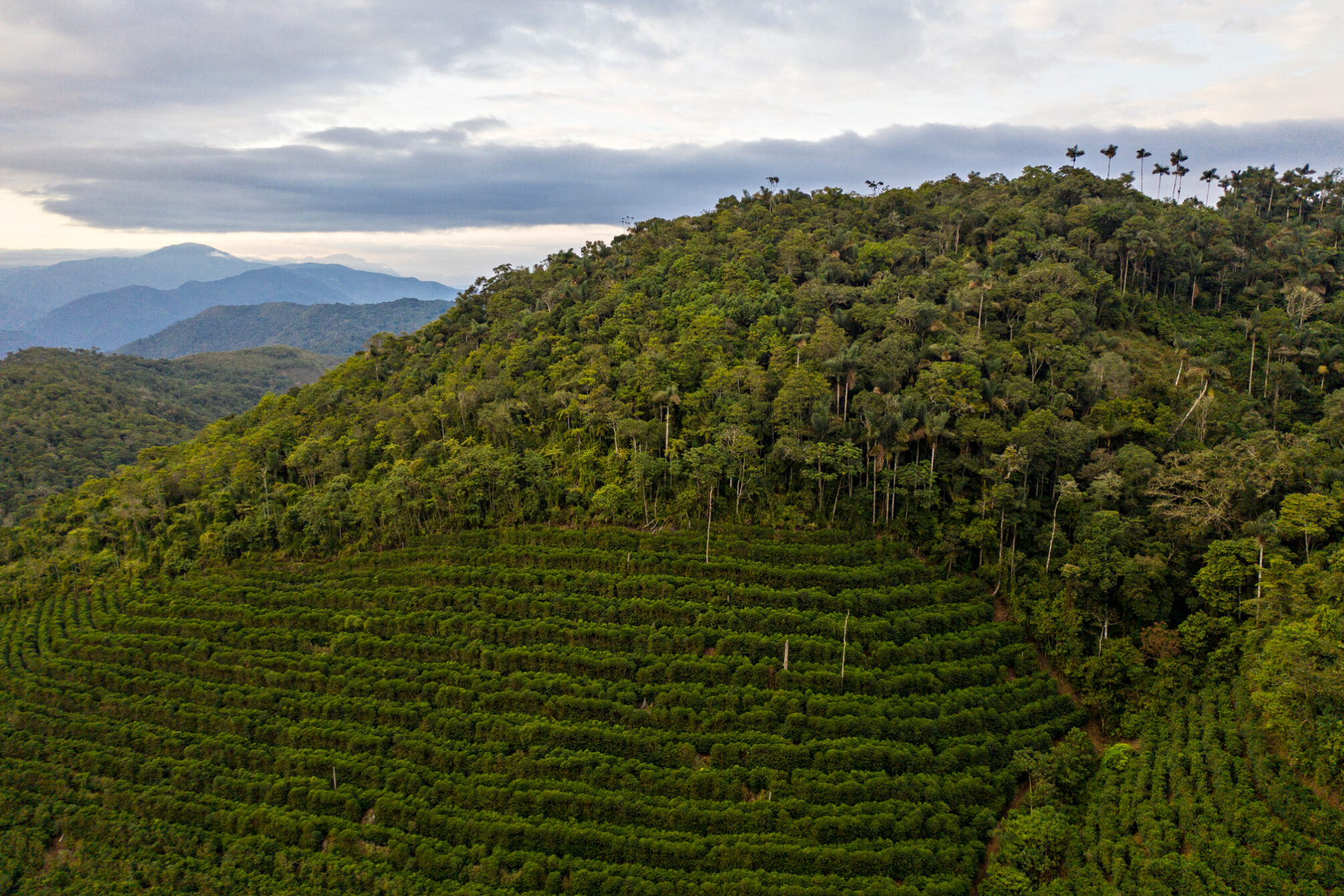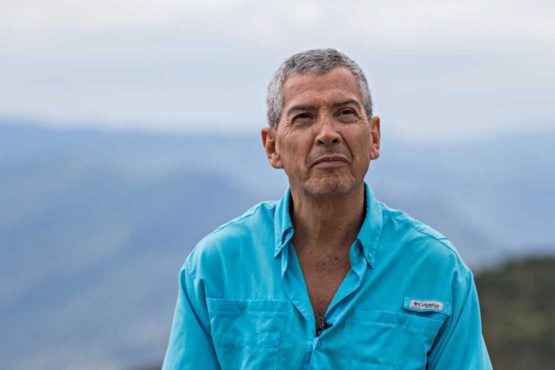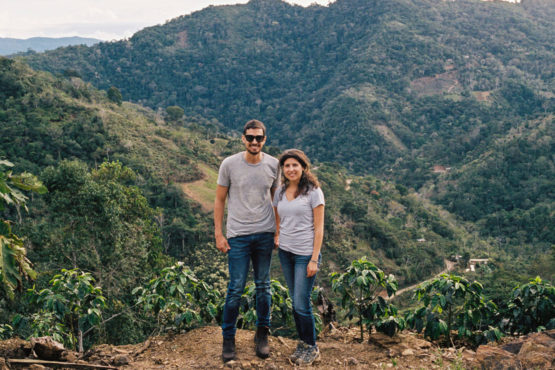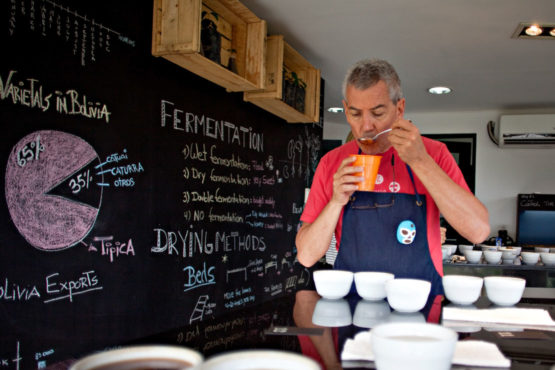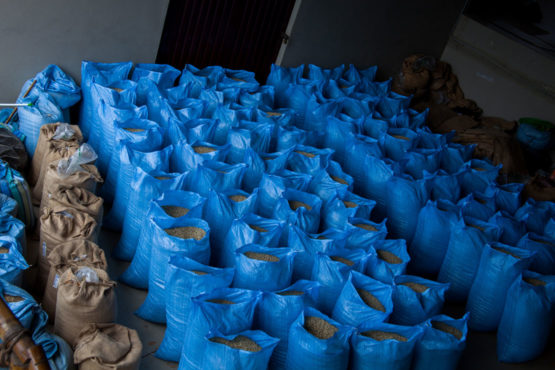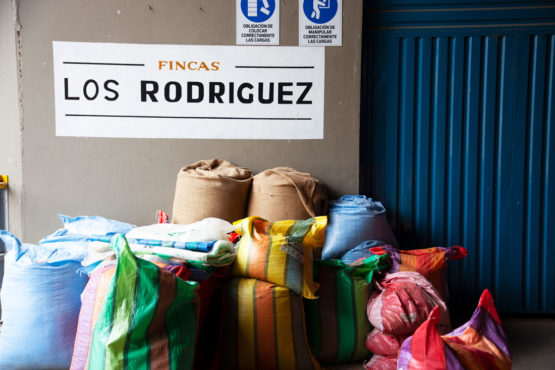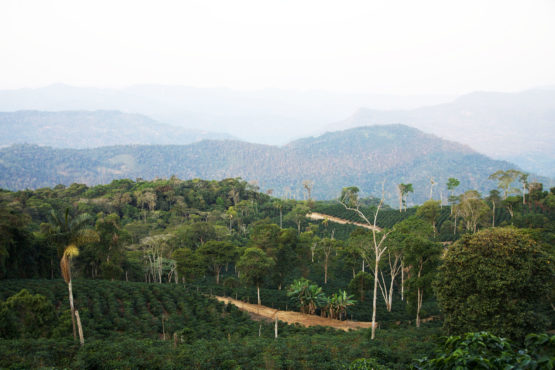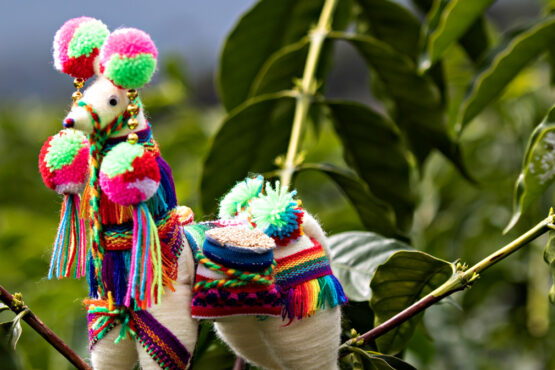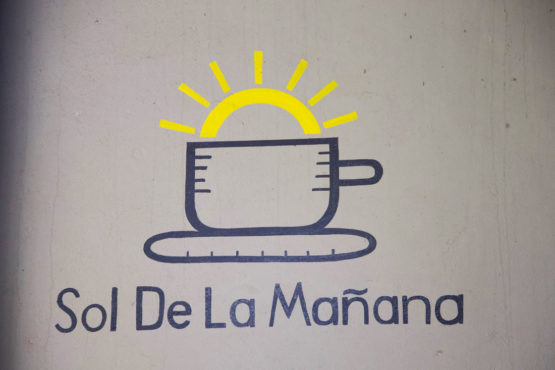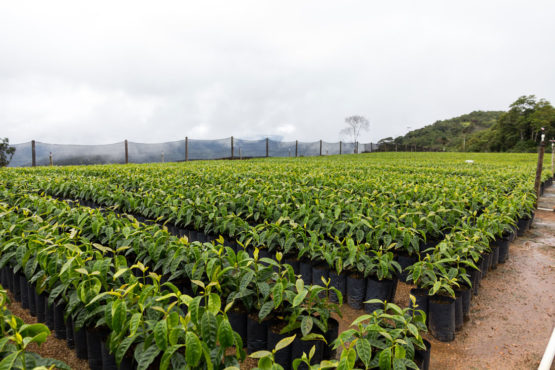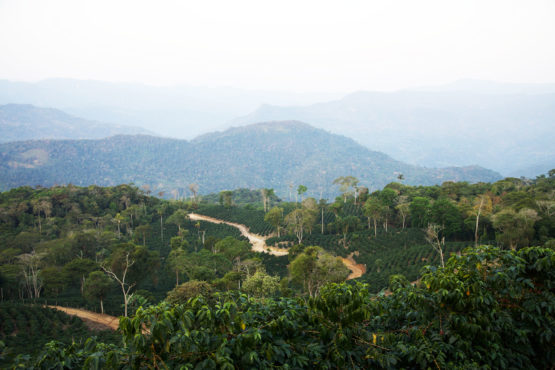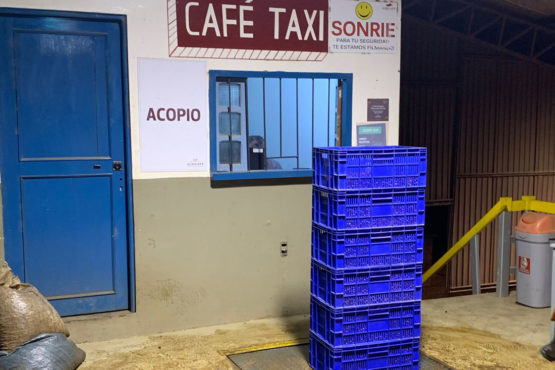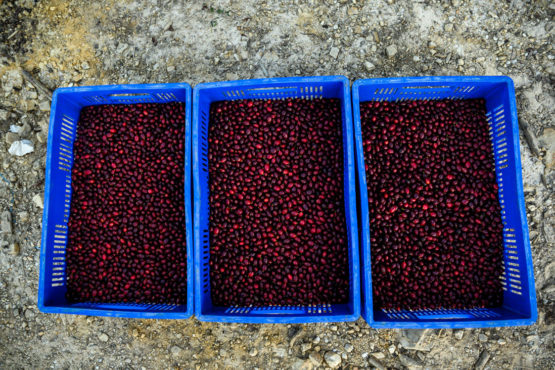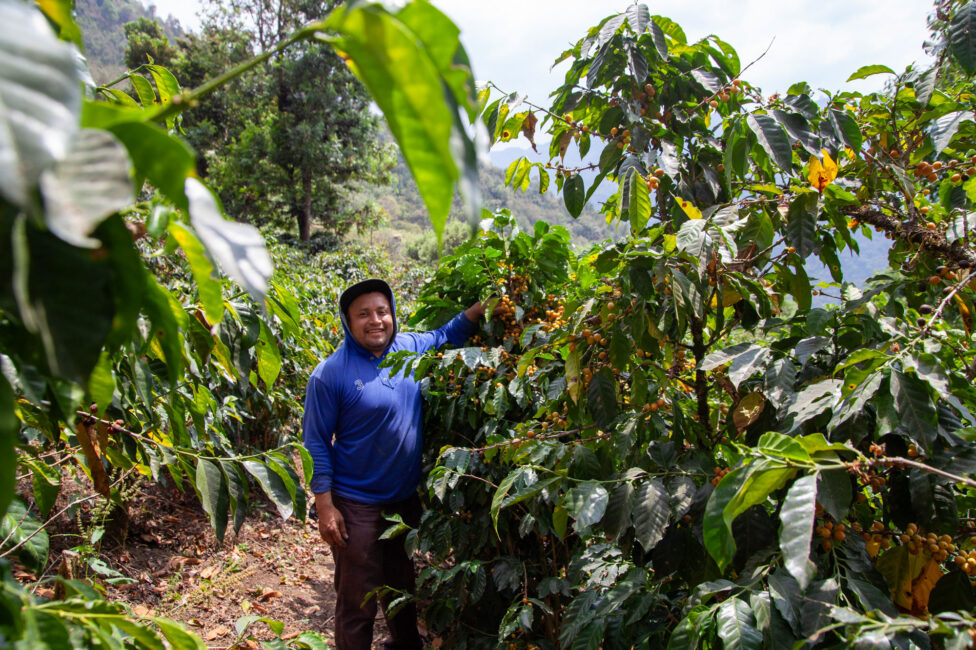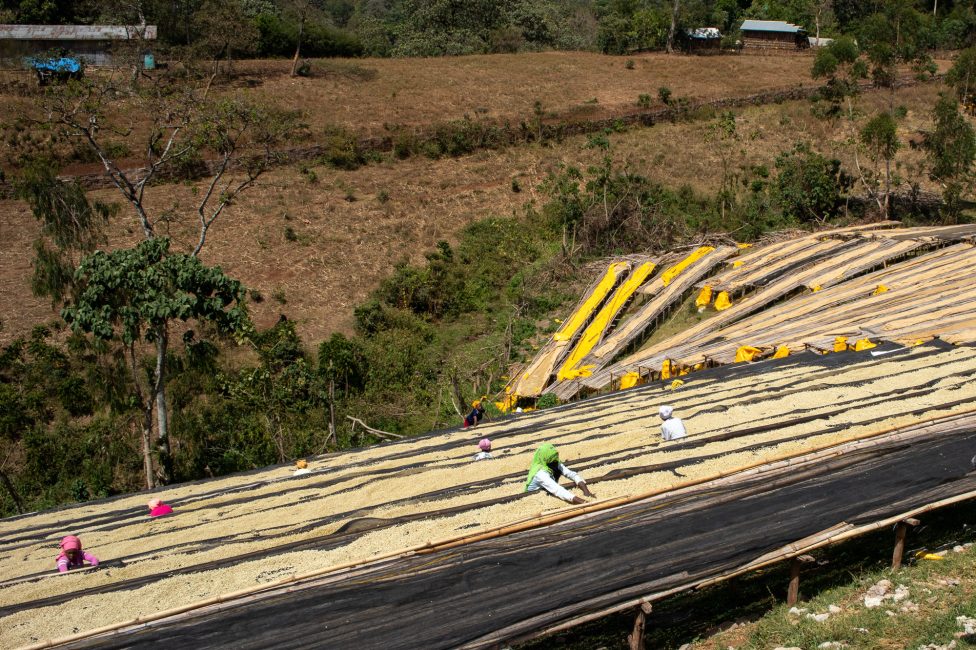La Llama Ethiosar Lactic Washed
Rose, orange blossom, nectarine, and white sugar. Crisp and juicy, with great transparency and balance.
This tiny 60kg Ethiosar nano-lot comes from a new farm called Finca La Llama. This farm has only been in harvest since 2017, and its production is still small but of exceptional quality. The small ten-hectare farm is located in the settlement of Villa Rosario, which lies in a lush, steep mountain valley just outside of the town of Caranavi.
La Llama is owned by the Rodriguez family, who also own a business called Agricafe, which produces coffee from its own farms and also sources quality micro-lots from small producers in the Yungas region.
Coffee production in Bolivia is, and always has been, very small. Pedro began his journey in coffee by working with small producers in Caranavi, building a wet mill to process their coffee, and educating producers to selectively handpick their cherries. He also started to process small micro-lots from each of the producers, and because of the unique combination of heirloom varieties, rich soil and incredibly high altitudes, the results were outstanding.
However, despite increased international recognition for its quality, coffee production in Bolivia began to rapidly decline over a very short period of time for many reasons. Some farmers switched to coca – grown for the drug trade and illegal to produce in Caranavi – because it provided them with a high year-round income. For those still in coffee, their yields were also declining as a result of aging coffee plantations, unsophisticated farming techniques, and leaf rust. The combination of these factors resulted in the nation’s coffee production declining by more than half.
In 2012, as leaf rust started to obliterate the production in many small farms, Pedro and his family began to invest in their own plantations, fearing that coffee production in Bolivia would disappear completely. This, they recognised was critical to guarantee a minimum level of supply and thus ensure the future sustainability of their business. They acquired land in Caranavi near their Buena Vista mill and created their first farm, Finca La Linda. “This is where the dream started,” Pedro says.
Today Agricafe has 12 farms and around 130 hectares of coffee under the banner of ‘Fincas Los Rodriguez’. Seven of these are in Caranavi, in the department of La Paz, and the remaining five are in Samaipata, in the department of Santa Cruz in Bolivia’s east.
The Rodriguez family’s approach to coffee production has been extremely methodical, scientific and innovative. Along the way, they consulted leading specialty coffee agronomists from around the world to help them produce exceptional coffee and build sustainable and healthy farms. A wide range of varieties have been trialed, along with different farming techniques, to optimise quality and output. They have carefully documented their findings at every step of the way and continue to innovate and invest in improvements to produce the very best quality coffee they can.
The Rodriguez farms are some of the most organised and beautiful we have come across. Coffee is well spaced in neat rows and meticulously organised by variety, making picking and lot separation much easier to manage than on more traditional farms in the region. The farms are vibrant, luscious and healthy, and produce exceptional quality and yields.
ABOUT LA LLAMA
La Llama is the highest of all of the Los Rodriguez farms, sitting at over 1,700m above sea level. At this high altitude, temperatures are mild during the day and stable at night. This helps ensure a slow maturation of the cherry, which leads to an increased concentration of sugars in the cherry and bean, producing a sweeter cup of coffee.
Early in the morning or late afternoon, it is very common to find a mystic fog covering the coffee plants. This is caused by a special microclimate, with changing temperatures, and mineral rich soil, perfect for the coffee plants to grow properly.
La Llama is 9.6 hectares in size, 5.24 of which are under coffee. Reaching the highest point of the farm is an experience in itself – as you travel along the winding, steep roads in a four-wheel-drive you’ll pass very neat and perfectly spaced rows of coffee.
Pedro and his family have invested a lot of time and effort into trying to make each of their plantations a ‘model’ farm that other producers in the area can learn from. Their learnings have also been shared with local producers through a training program that the family has developed called Sol de la Mañana.
Pedro has trialed several varieties on this farm, including Java, Geisha, Yellow Caturra, Sl28, SL34, Batian, and Ethiosar. This particular lot is 100% Ethiosar.
HOW THIS COFFEE WAS PROCESSED
At La Llama, Pedro hires pickers from the Villa Rosario community to carefully handpick the coffee during the harvest. These pickers are trained to select only the very ripest cherries, and multiple passes are made through the farm throughout the harvest to ensure the coffee is picked at its prime. Selective picking is always very important and is particularly important for special micro-lots like this one, to ensure a very sweet and clean cup. The Rodriguez family has found that the very ripest (almost purple) cherries provide the best cup.
Pedro is always innovating and trialing different processing techniques and in this case the coffee was processed with a strong influence from the wine industry. After being picked and weighed, the coffee cherries are pulped and then fermented without water in steel tanks for 77 hours. This process allows for the development of lactic acid, resulting in a distinct and creamy character in the flavour profile.
The coffee was then laid out to dry on raised beds and regularly turned for up to 48hrs, before being finished in a mechanical dryer for around 35hrs, with temperatures no higher than 40˚C. When the coffee reached 16% humidity it was rested for five hours in a silo, and then carefully dried until it reached 11.5% humidity.
Once the coffee was dry, it was transported to La Paz where it was rested, and then milled at Agricafe’s dry mill, La Luna. At this state-of-the-art mill, coffee is meticulously hulled and sorted using machinery, and is also sorted carefully by hand under UV and natural light. The mill is one of the cleanest and most impressive we have seen – you can read more about it here.
WANT TO KNOW MORE?
You can watch an interview with Pedro Rodriguez, the owner of Agricafe, here and about Agricafe’s small producer training program, Sol de la Mañana, here, and about Bolivian coffee more generally here.
